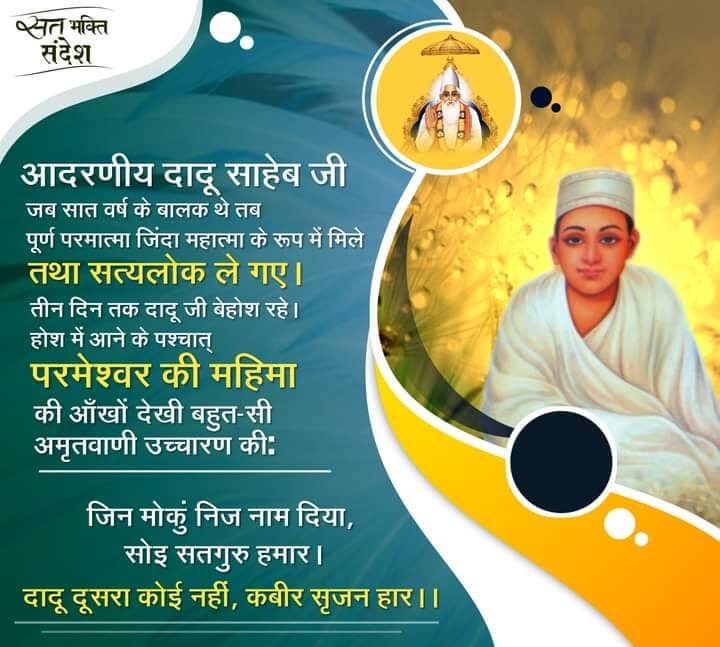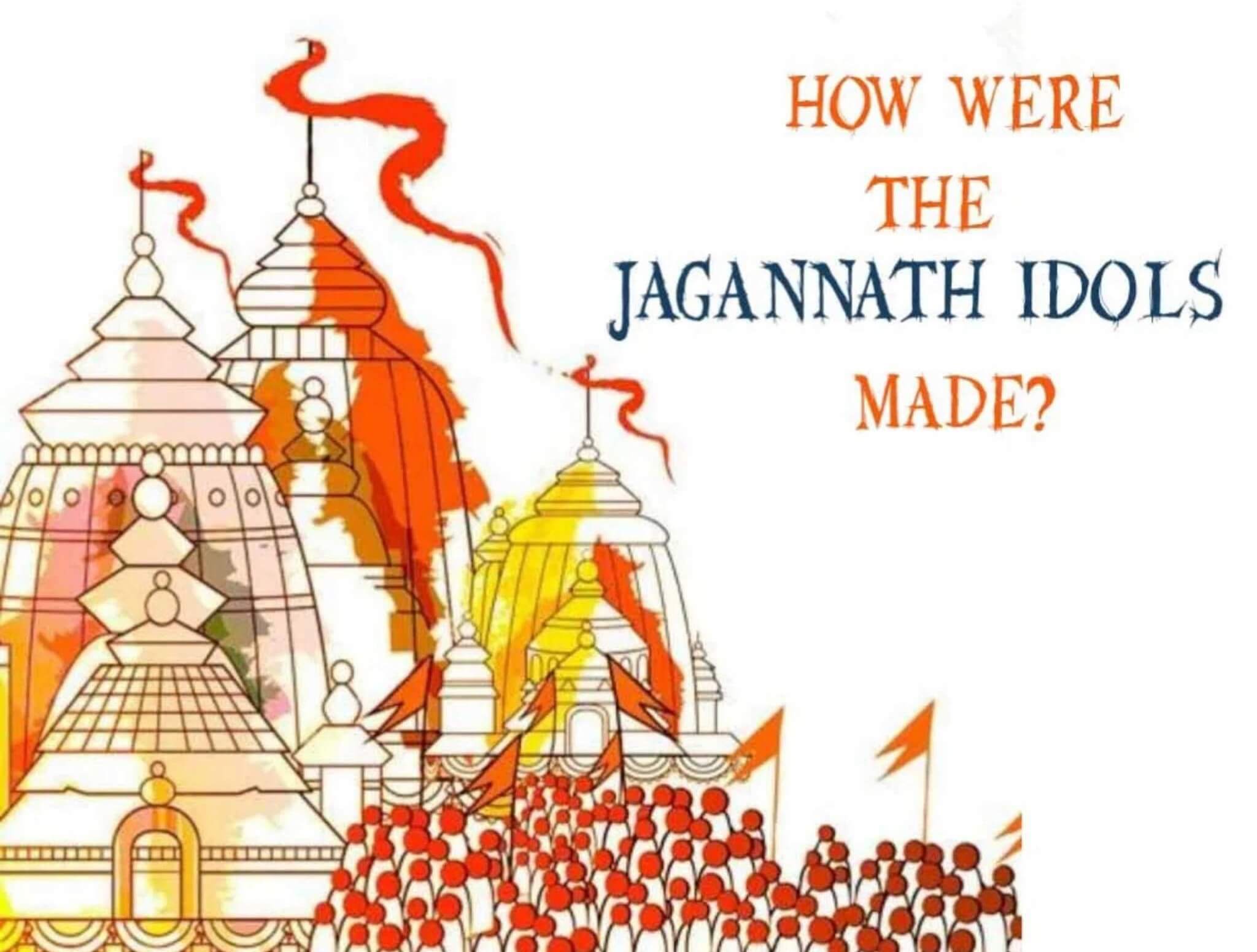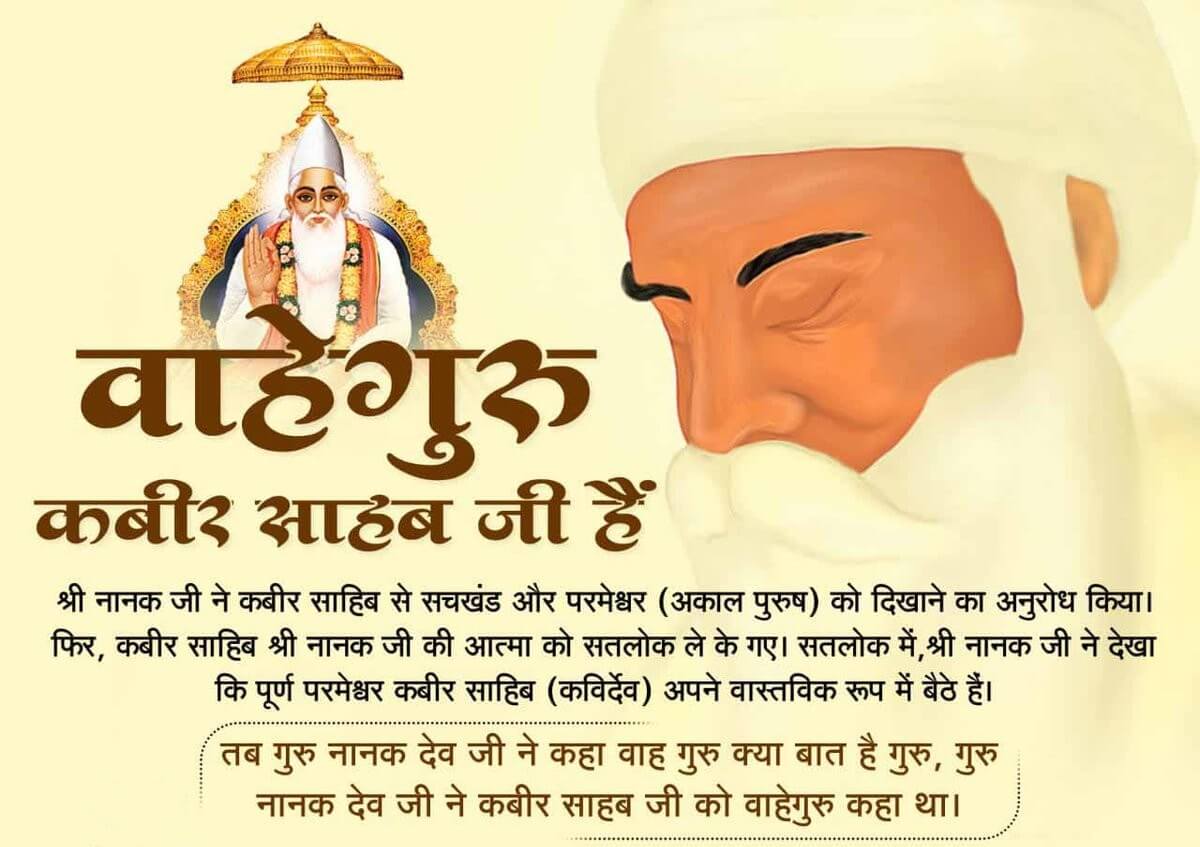Summary of Chapter "Gyan Prakash" (Sixth Chapter):
As mentioned at the beginning of this text (simplified explanation of Kabir Sagar), the Kabir Panth followers have altered the original meaning of Kabir Sagar. They have made modifications based on their understanding, cutting some portions, reordering others, and adding fabricated verses, thus distorting the essence of Kabir Sagar. However, like the ocean, the truth within Kabir Sagar remains vast and cannot be fully emptied or eradicated. Many true accounts have survived these distortions. By comparing the existing versions with an ancient handwritten manuscript of Kabir Sagar, the pure teachings of Saint Garibdas Ji, and the divine knowledge bestowed by Parmeshwar Kabir Ji upon me (Rampal Das), the authentic truth has been presented here.
Evidence Supporting the Authenticity:
One significant example that serves as evidence for the wise:
In Gyan Prakash, there is a description of Parmeshwar Kabir Ji accepting Dhani Dharamdas Ji as His devotee and their dialogue. However, Dharamdas Ji’s place of residence has been misrepresented. Page 21 states that Dharamdas Ji resolved his doubts with his former Guru, Roopdas Ji, and returned to his home, described incorrectly as Mathura Nagar:
Incorrect Verses:
Tum ho Guru vo Satguru mora. Un hamar yam fanda tora (todda).
Dharmdas tab kari pranama. Mathura nagar pahunche nij dhama.
Actual Residence of Dharamdas Ji:
The truth is, Dharamdas Ji’s residence was in Bandhavgarh, a town in Madhya Pradesh. According to Saint Garibdas Ji's authentic teachings, Dharamdas Ji was a wealthy merchant from Bandhavgarh. He had visited Mathura on a pilgrimage and planned to visit other holy places after Mathura.
Further Evidence of Alterations:
Another inconsistency in Gyan Prakash involves the insertion of the story of Sarvanand Brahmin, which disrupts the flow of Dharamdas Ji's narrative. From pages 37 to 50, Sarvanand’s story is included unnecessarily. The account of Dharamdas Ji receiving initiation, performing Aarti and Chauka (rituals), appears on page 34. Then, from page 35 to 36, there is a discourse on the greatness of the Guru.
After a few verses labeled "Dharamdas Vachan" on page 36, the continuity of the Dharamdas Ji narrative breaks until it resumes on page 50, following the Sarvanand story. These inconsistencies are clear distortions, as the verses on page 50 align perfectly with the "Dharamdas Vachan" verses on page 36, interrupted unnecessarily by the Sarvanand account.
This distortion highlights the need for careful analysis and restoration of the original teachings in Kabir Sagar.
‘‘Dharmdas Vachan‘‘ Chaupai
Ho Saheb tav pad sir naaoon. Tav pad paras param pad paaoon.
Kehi vidhi aapan bhaag saraahi. Tav barat gahain bhaav punah banaai.
Kodhonn main shubh karm kamaaya. Jo Sadguru pad darshan paaya.
Gyaan Prakash Page 50
Dharmdas Vachan
Dhanya dhanya Saahib avigat naatha. Prabhu mohe nishdin rakho saatha.
Sut parijan mohe kachhu na sohaahi. Dhan daara aru lok badaai.
After this, the correct account continues. The section in between is an incorrect interpolation and adulterated content. Following the initiation, Parmeshwar Kabir Ji told Dharamdas Ji, "When you have full faith that the knowledge and the spiritual mantras I am imparting are true, then I will grant you the position of Guru. You must take one and a quarter lakh in wealth (rupees or gold) as a fee for initiation from those seeking it."
Parmatma tested Dharamdas Ji to see whether, being from the Vaishya (merchant) caste, he would be driven by greed and continue to listen to His teachings out of this materialistic motive. However, once true knowledge is attained, greed dissipates entirely. Dharamdas Ji, being a fully qualified Hans (enlightened soul), was sent directly from Satlok (the eternal realm). Recognizing this, Dharamdas Ji requested to reduce the fee and eventually convinced Kabir Ji to waive it altogether and initiate seekers for free.
Now let us take essential verses from page 9 of "Gyan Prakash":
The divine words spoken by Parmeshwar Kabir Ji are themselves nectar. Reading or listening to these words destroys countless sins. Below are excerpts from the chapter "Gyan Prakash" of the original Kabir Granth:
Dharamdas Bodh = Gyan Prakash
The following verses are from the ancient Kabir Granth’s chapter "Gyan Prakash":
Baandhavgarh nagar kahai. Taamen Dharmdas saah rahai.
Dhan ka nahin vaar ru paara. Hari bhakti mein shraddha apaara.
Roop Das Guru Vaishnav banaaya. Un Ram Krishna Bhagwan bataaya.
Teerth barat murti pooja. Ekadashi aur Salig suja.
Take mate dridh Dharmni Nagar. Bhool raha vah sukh ka saagar.
Teerth karan ko man chaaha. Guru aagya le chala umaaha.
Bhatakt bhramat Mathura aaya. Krishna sarovar mein uth nahaaya.
Chauka leepa pooja kaaran. Fir laga Gita shlok uchaaran.
Taahi samay ek saadhu aaya. Paanch kadam par aasan laaya.
Dharmdas ko kaha adesha. Jinda roop saadhu ka bhesha.
Dharmdas dekha nazar uthai. Pooja mein magan kachhu bolya naahin.
Jagyasu vat dekhe daata. Dharmdas jaana sunat hai baata.
Unche sur se path bulaaya. Jinda sun-sun sheesh hilaya.
Dharmdas kiya Vaishnav bhesha. Kanthi mala tilak pravesha.
Pooja path kar kiya vishraama. Jinda puni kiya pranama.
Jinda kahai main suna path anupa. Tum ho sab santan ke bhoopa.
Mokain gyaan sunaao Gosaain. Bhakti saras kahin nahin paai.
Muslim Hindu Guru bahu dekhe. Aatm santosh kahin nahin eke.
Dharmdas man uthi umanga. Suni badai to laaga changa.
Dharmdas Vachan
Jo chaaho so poocho prasanga. Sarv gyaan sampann hoon bhakti ranga.
Poochhoon Jinda jo tum chaaho. Apne man ka bhram mitao.
Jinda Vachan
Tum kako path karat ho santa. Nirmal gyaan nahin koi anta.
Mokoon puni sunaao baani. Jaate milai mohe Sarang paani.
Tumhare mukh se gyaan mohe bhaavai. Jaise jihna madhu tapkaavai.
Dharmdas suni jab komal baata. Pothi nikaali man harshaata.
Read the rest of the account in Ugra Gita.



